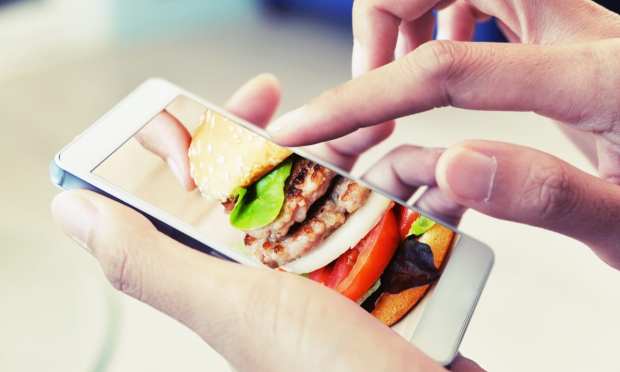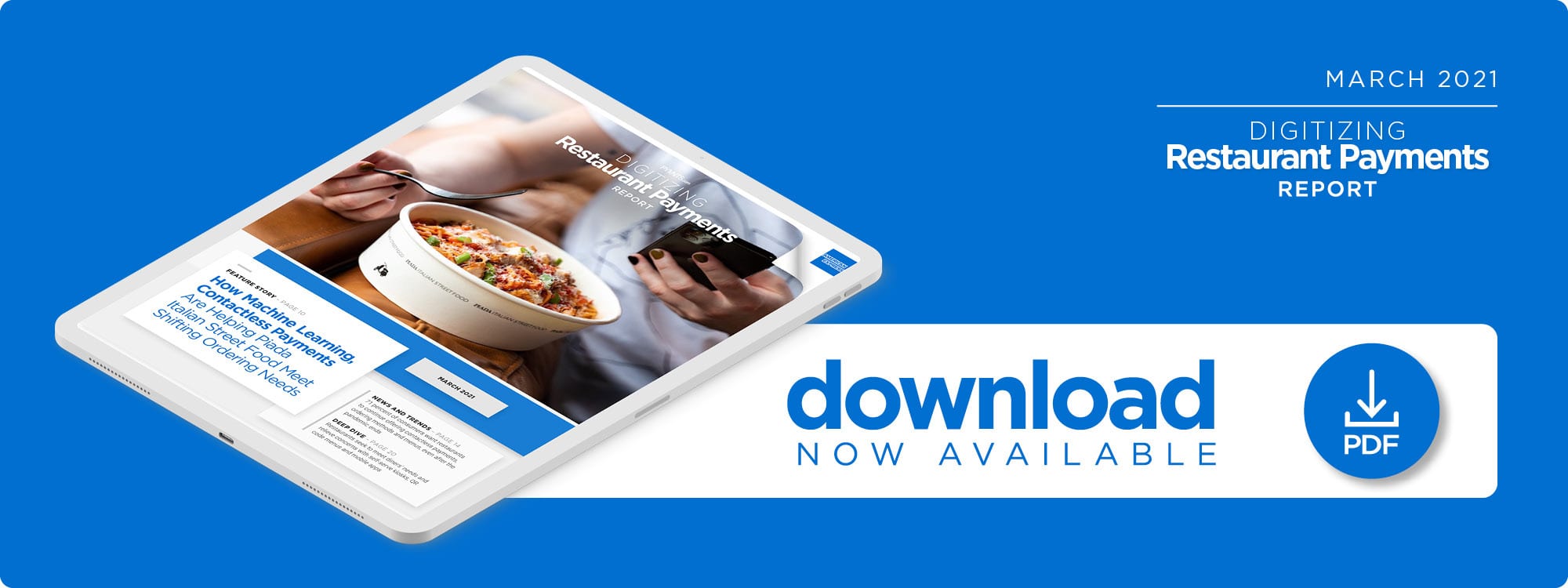Deep Dive: How Ordering, Payment Technologies Help Restaurants Serve Up Safer Experiences

The global health crisis sent restaurants scrambling as many business models were overturned.
Gathering diners in the same enclosed spaces where they would be sharing air suddenly became dangerous when the airborne virus arrived in the U.S. and quickly spread. Consumers, employees and restaurant managers became and remain keenly aware of these risks, even as some local governments permit on-site dining to reopen. Continuing to serve customers during the pandemic has therefore required establishments to upgrade their setups and offer swift, socially distant ordering and payment experiences for both pickup and dine-in services to lower contagion risks and make diners feel more comfortable.
These considerations have also been key when it comes to payments experiences, as consumers want to use their preferred payment methods across all channels. Restaurants must therefore be payment-agnostic and support transactions that leverage consumers’ preferred credit or debit cards, cards on file, payments made via QR codes and contactless wallets.
This Deep Dive examines that journey, detailing how restaurants have turned to technologies like self-serve kiosks, QR code-accessible digital menus and mobile order-ahead and payment apps to help meet contactless demands.
Socially Distant Service
Restaurants have been deploying various technologies to offer quick, contactless ordering that can help meet the health and safety needs of consumers who place orders on site, whether for takeaway or sit-down meals. Some venues have introduced self-serve kiosks where diners can order, often without needing to interact with wait staff. An October survey of 2,081 U.S. adults found that 44 percent of respondents would like to use kiosks at their favorite dining establishments during their next visits, while even more consumers wanted to use these machines at quick-services restaurants (QSRs). Seventy-one percent of diners said they would rather use self-service kiosks at QSRs than engage with staff members during at least some visits. This may indicate that consumers are most desirous of automated experiences at venues where they are already primed to expect minimal interaction with staff.
Many of the surveyed consumers were also eager to use their phones to browse menus, order and pay instead of engaging with waitstaff. Forty-five percent of respondents expressed interest in such mobile offerings, and these purchasing habits may prove to be long-lasting, with 40 percent of that segment saying they would like to keep using these methods even after the crisis ends. Restaurants must take special note of this trend as consumers become more discerning in regard to their chosen payment methods. Catering to diners who prefer to pay using cards with incremental fees as well as those who have turned to mobile wallets, for example, will be important for eateries.
Virtual Browsing and Payment
Restaurants have doubled down on virtual menus during the past year and have taken approaches such as posting QR codes that visitors can scan with their phones to pull up meal options. This move can enable customers to view menus before entering the locations so they can get in and out more quickly. Touch-free options like these may also have been at least partially inspired by fears that spread early last year over the possibility of the virus being transmitted via contact with shared physical objects. Many full-service eateries have since deployed alternatives to physical menus, with 54 percent of casual dining, 48 percent of family dining and 50 percent of fine dining establishments saying they had launched QR code menus, according to a survey of 6,000 restaurant owners and operators that was conducted in November and December.
Venues are also sensitive to how consumers want to pay for these orders, and 40 percent of restaurant operators said that they had adopted contactless or mobile payments after March 2020. Customers appear responsive to these offerings, as a separate 2020 survey found that 43 percent of consumer respondents would like to use contactless payments at checkout. Other diners wanted to avoid going inside entirely, with 40 percent preferring to place mobile orders while remaining in their cars outside the eateries and 38 percent favoring curbside pickup options. Solutions like these can all help restaurants satisfy diners’ cravings while minimizing the chances of viral exposure.
Remote Order and Delivery
Many customers prefer to avoid tableside service during the pandemic, and pickup and delivery have seen striking growth as a result. Online ordering and delivery accounted for 39 percent of restaurant franchises’ sales in 2020 and just 20 percent in 2019. Franchisees have taken note, and 69 percent planned to invest in mobile ordering in 2021 — a far cry from the 25 percent that had intended to do the same for 2020, reflecting just how significantly the pandemic has changed industry outlooks.

A December PYMNTS survey of 490 restaurants also found that while 60 percent had taken revenue hits during the pandemic, digital tools could help soften the blow or even increase revenue. Ninety-two percent of restaurants deemed “top performers” gave customers mobile order-ahead options, for example. Similarly, 56 percent of eateries where customers began using mobile order-ahead offerings more often said their revenues grew during the pandemic.
Top-performing restaurants are also ahead of the curve in offering more opportunities for consumers to pay using their preferred methods. More than 30 percent of these eateries enable consumers to pay using cards on file, for example, whereas just 10 percent and 6 percent of middle- and bottom-performing restaurants say the same, respectively.
Offerings enabling digital ordering for pickup or delivery are especially likely to appeal to younger generations. A December survey of 1,000 adults found that 90 percent of Generation Z and 85 percent of millennial consumers had ordered food delivery within the past six months, as did just 58 percent of baby boomers. These younger diners were also particularly likely to use third-party delivery services to get their meals, with 63 percent of Gen Z and 60 percent of millennial consumers using such options during the past six months, along with only 19 percent of baby boomers.
Health concerns have made serving customers challenging, leading many restaurants to turn to ordering and payment technologies to help them meet demands for both safety and convenience to deliver rapid, compelling services. Diners who become accustomed to the speed and seamlessness of ordering apps and other tools are likely to want to keep using them well after the pandemic has ended, making it all the more important for restaurants to develop strong digital strategies now.

